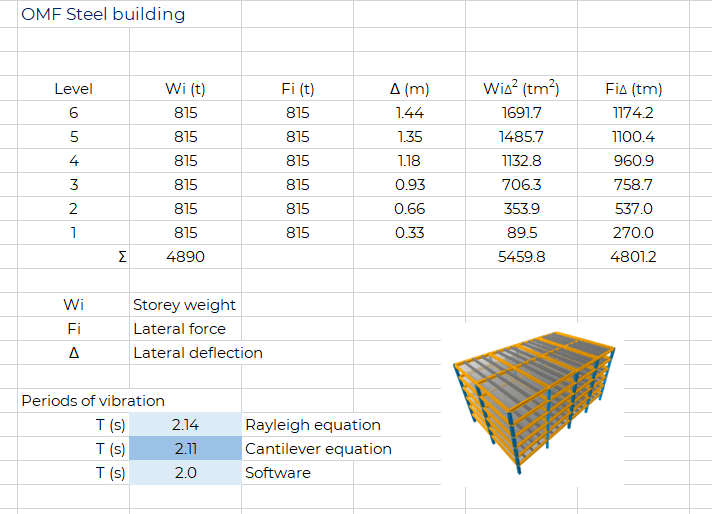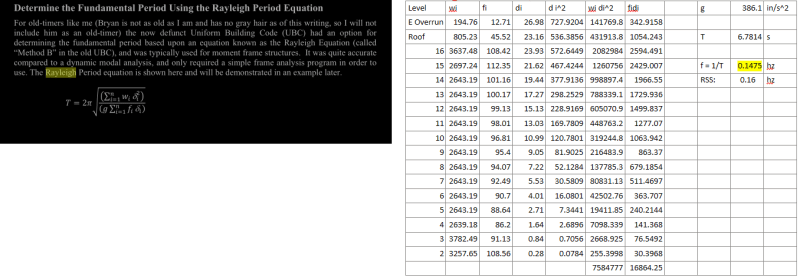concepto.ed
Structural
Nowadays, checking results of structural design softwares is a very important task and using approximate formulas can save a lot of time.
How do you deal with fundamental period of buildings depending on its structural system? Do you think it is a property that can be estimated during structural design?
I have not been able to find something, equations like T= N/10 or the ones included in ASCE 7, are not always adequate, specially for moment resisting frames. ASCE 7 formulas are intended to provide a conservative (short) estimation that results in higher base shear using ELF. In my experience, they differ substantially from that values obtained using a detailed modal analysis of structures.
Thank you all!
How do you deal with fundamental period of buildings depending on its structural system? Do you think it is a property that can be estimated during structural design?
I have not been able to find something, equations like T= N/10 or the ones included in ASCE 7, are not always adequate, specially for moment resisting frames. ASCE 7 formulas are intended to provide a conservative (short) estimation that results in higher base shear using ELF. In my experience, they differ substantially from that values obtained using a detailed modal analysis of structures.
Thank you all!


